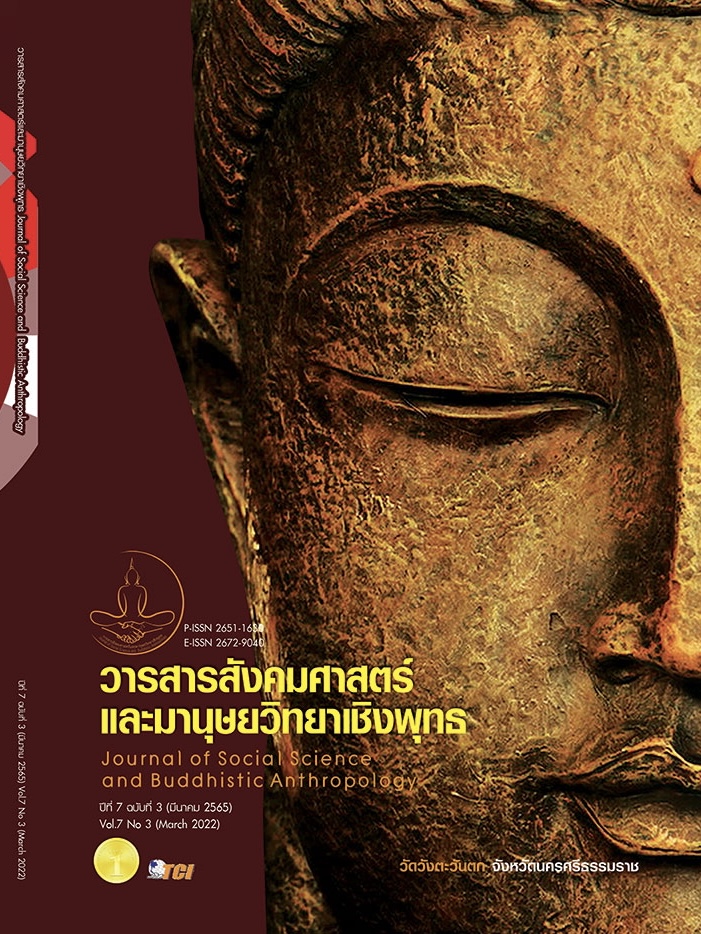BUSINESS MANAGEMENT STRATEGY FOR WOOD FURNITURE MANUFACTURING IN THAILAND
Keywords:
Composition Analysis, Business Management Strategy, Wood Furniture Manufacturing IndustryAbstract
The objectives of this article are to 1) study the composition of the management strategy for wood furniture manufacturing business in Thailand 2) propose the strategy for the management of the wooden furniture manufacturing business in Thailand. The researcher conducted a study from a sample group. is a group of entrepreneurs producing wooden furniture at Thailand. The tools used in the research were questionnaires. Statistics were percentage, mean, standard deviation and composition analysis. The results showed that level of importance is at a high level, comprising of business administration operations of entrepreneurs producing wooden furniture at present. The strategy for developing the wooden furniture manufacturing business of entrepreneurs with a high level of emphasis is the Mckinsey strategy, which consists of strategy and strategy. The organizational structure system. The management style, personnel, skills, abilities and shared values. The Value Chain strategy consisted of basic activities and supporting activities factors of the main components in the development of exploratory wood furniture business management strategies as for the main factors in the development of business management strategies for wood furniture manufacturing in Thailand, found that the components can be arranged as follows. Mckinsey's theory is organized as follows. 1) Operation 2) Leadership 3) Management 4) Progress path 5) Improvement of work 6) Human Resource Management and Value Chain theory can be composed as follows: 1) Marketing Management 2) Strategic Support Activities 3)Raw material management.
References
กรมส่งเสริมอุตสาหกรรม. (2563). อุตสาหกรรมเฟอร์นิเจอร์ที่ทำด้วยไม้. เรียกใช้เมื่อ 20 ตุลาคม 2563 จาก https://www.ryt9.com/s/ryt9/274073
กระทรวงพาณิชย์. (2561). กรมพัฒนาธุรกิจการค้า. กรุงเทพมหานคร: กระทรวงพาณิชย์.
กระทรวงอุตสาหกรรม. (2561). สถานการณ์การผลิตภาคอุตสาหกรรม. กรุงเทพมหานคร: กระทรวงอุตสาหกรรม.
ธานินทร์ ศิลป์จารุ. (2557). การวิจัยและวิเคราะห์ข้อมูลทางสถิติด้วย SPSS และ AMOS. (พิมพ์ครั้งที่ 15). กรุงเทพมหานคร: ห้างหุ้นส่วนสามัญบิสซิเนสอาร์แอนด์ดี.
ปพิชญา จุลอ่อน. (2554). กลยุทธ์การตลาดเพื่อเพิ่มยอดขายเฟอร์นิเจอร์และเครื่องใช้ในครัวเรือนของร้าเฟอร์นิเจอร์ อำเภอโซ่พิสัย จังหวัดบึงกาฬ. ใน วิทยานิพนธ์บริหารธุรกิจมหาบัณฑิต สาขาบริหารมหาวิทยาลัยขอนแก่น. มหาวิทยาลัยขอนแก่น.
สำนักงานเศรษฐกิจอุตสาหกรรม. (2555). ทำเนียบอุตสาหกรรม 1. เรียกใช้เมื่อ 14 พฤษภาคม 2563 จาก http://www.oie.go.th/sites/default/files/attachments/ publications/planname_03/index.html#/0
สำนักงานเศรษฐกิจอุตสาหกรรม. (2562). รายงานภาวะเศรษฐกิจอุตสาหกรรมปี 2561 และแนวโน้มปี 2562. เรียกใช้เมื่อ 25 ตุลาคม 2563 จาก https://www.ryt9.com/ s/oie/2938334
เอกตะวัน ธมนตรี. (2558). การสร้างความได้เปรียบในการแข่งขัน. เรียกใช้เมื่อ 25 กันยายน 2559 จาก http://ektawangm301.blogspot.com/
Likert, R. (1967). “The Method of Constructing and Attitude Scale” Attitude Theory and Measurement. New York: Wiley & Son.
Peter, P. J. (2009). Consumer Behavior and Marketing Strategy Homewood. Lllionois: Richard D.Irwin.
Zeithaml, V. A. (2009). Consumer perceptions of price, quality and value : A mean-end modeland synthesis of evidence. Journal of Marketing, 52(1), 2-22.
Downloads
Published
How to Cite
Issue
Section
License
Copyright (c) 2022 Journal of Social Science and Buddhistic Anthropology

This work is licensed under a Creative Commons Attribution-NonCommercial-NoDerivatives 4.0 International License.








